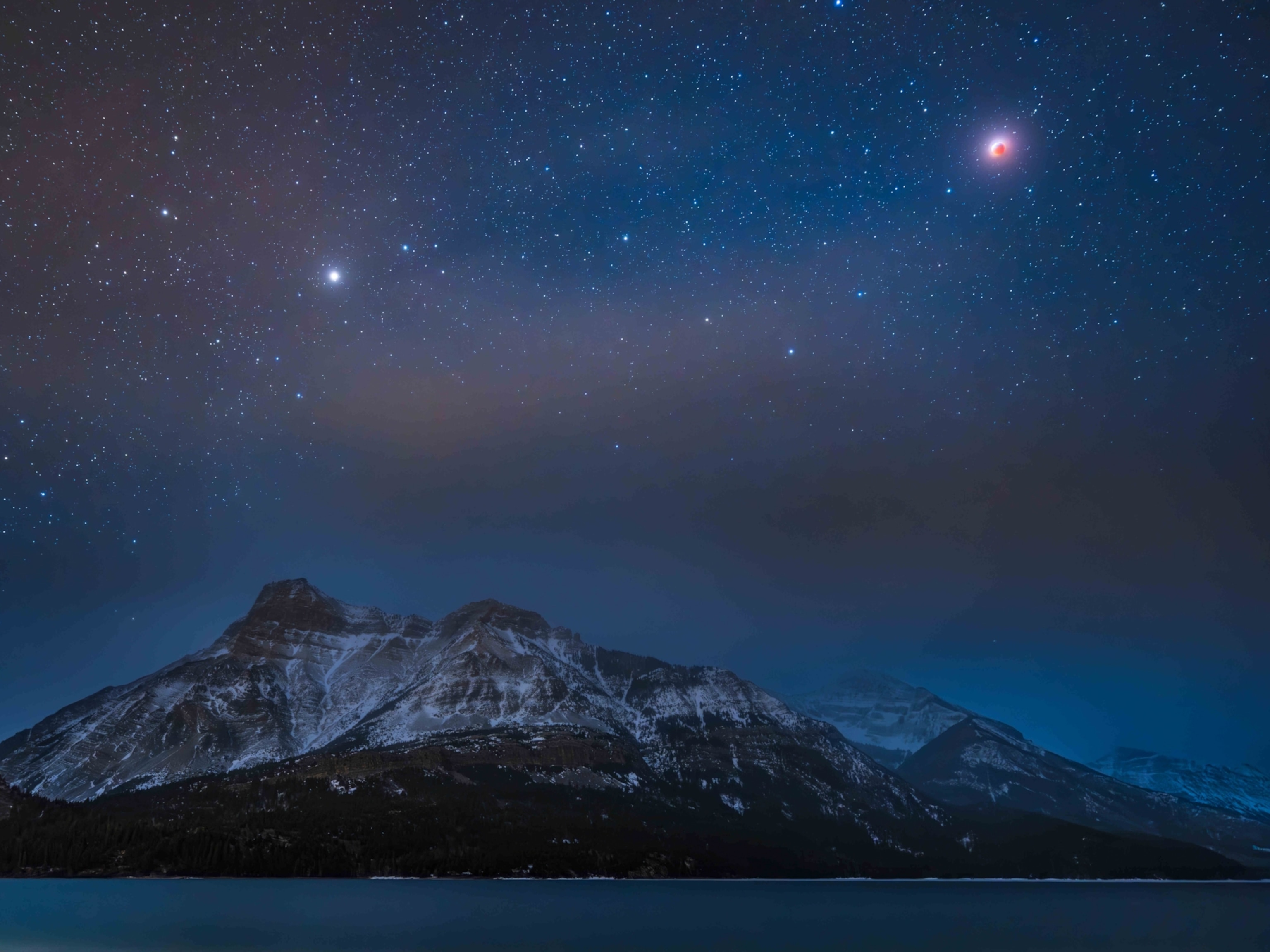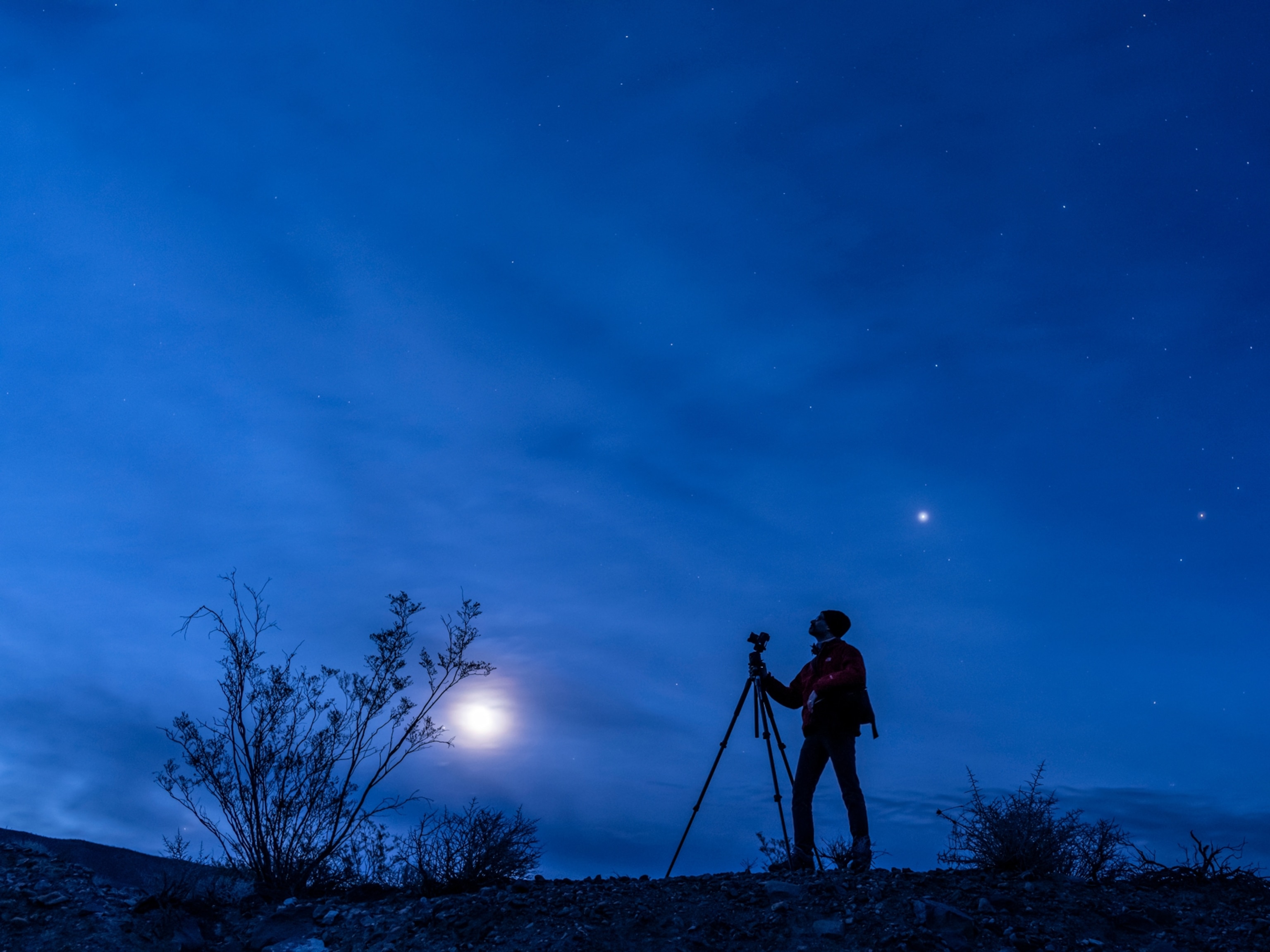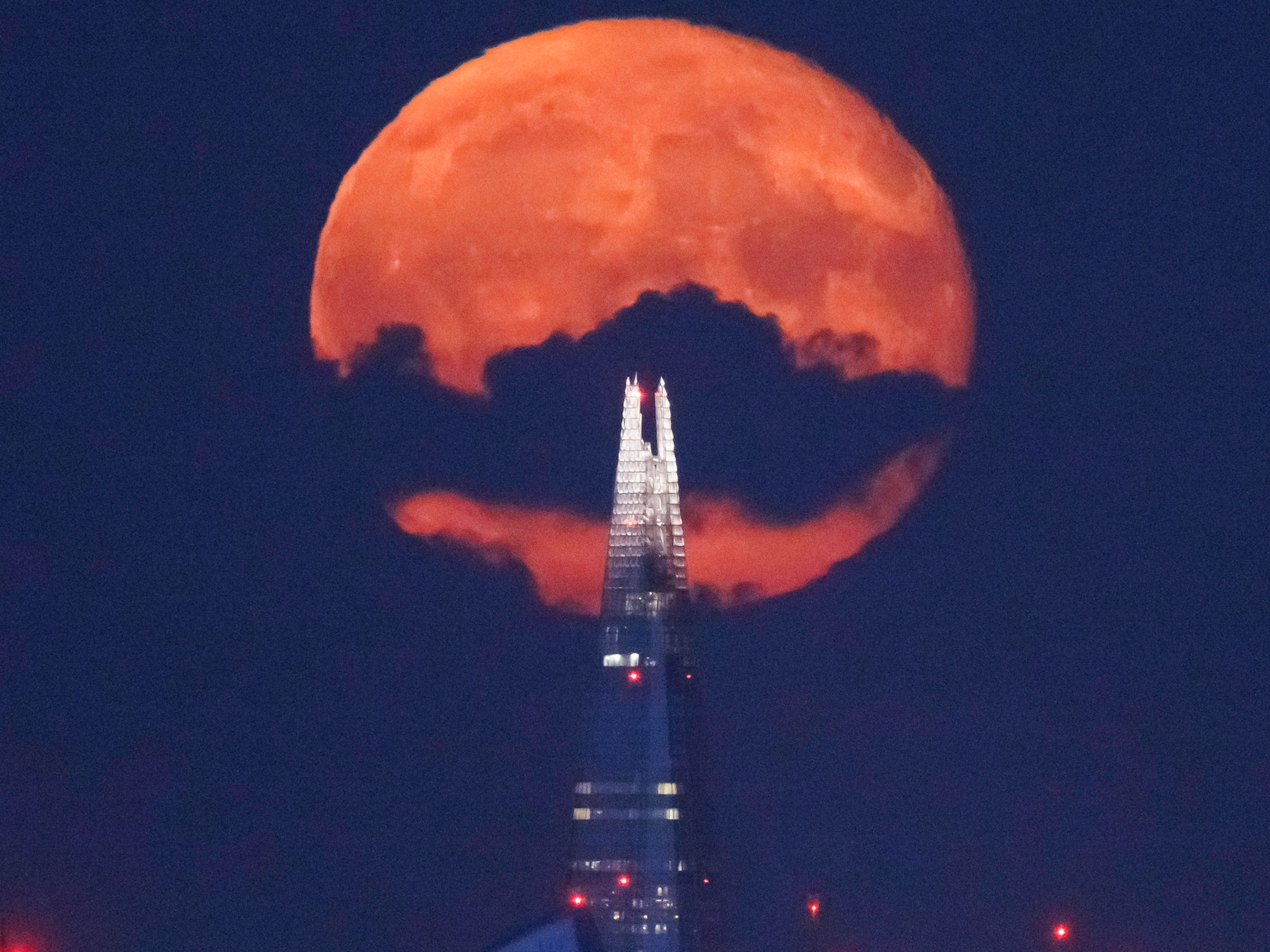
What is a 'black moon', and how often does one happen?
Find out what this lunar event really means, and why it's actually impossible to see a black moon rising.
Humans have long had a fascination with lunar events—and with the rise of the internet, all kinds of moon moments have become media sensations. Consider supermoons, harvest moons, and the rare "super blood moon" total eclipse.
Lunar fans may therefore be tempted to add another celestial sight to the list: a “black moon,” popularly defined as the second new moon in a month. However, this event may not exactly make for good sky-watching.
New moons occur when the moon’s orbit takes it between Earth and the sun, leaving the lunar orb’s unilluminated side facing Earth. At night, this phase of the moon is impossible to see: Since new moons are in the same part of the sky as the sun, they rise and set with the sun and are overwhelmed by its glare.
New moons can be readily seen only when they pass directly in front of the sun, causing solar eclipses. Otherwise, sky-watchers must look to the days before or after a new moon, when just a sliver of the moon’s sunlit side is visible from Earth.
Usually, new moons occur only once a month, but because there’s a slight disjunct between the moon’s phases—a 29.5-day cycle, on average—and the Gregorian calendar, some months can have two new moons: one at the beginning and one at the end. Joe Rao of Space.com notes that this double-dipping occurs once every 32 months or so.
In this sense, a black moon is like the evil twin of a blue moon, conventionally understood as the second full moon in a month. But let’s be clear: This type of new moon—like any astronomical event—doesn’t bring ill tidings or herald the end of days, despite some astrological fear-mongering that has been seeping through the web.
If anything, a black moon can be a harbinger of new beginnings and festivities: A black moon that fell on September 30, 2016, was followed by a barely visible waxing crescent moon shining down on Rosh Hashanah, the Jewish New Year, and by a growing crescent that marked the beginning of Muharram, the first month in the Islamic lunar calendar.
And due to time zones, a new moon may not always be a true black moon for the majority of humankind. The September 2016 new moon started after midnight on October 1 for people in the Eastern Hemisphere, putting it in the wrong month to fit the popular definition.
That year, many people in the Eastern Hemisphere instead got a black moon on October 30, and for people living in East Asia, Japan, New Zealand, and Australia, the black moon came on the perfect spooky date: October 31, or Halloween.





